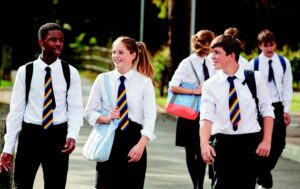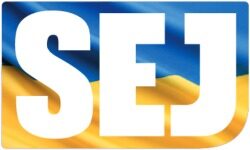
By David Dick, Chair of EIS LGBT Sub-Committee 2020-22
In the summer of 2021, Scotland made history, by being the first country in the world to embed lesbian, gay, bisexual and transgender (LGBT+) inclusive education across the school curriculum. This hard-won and long overdue achievement was the result of sustained, organised, collective action by individuals, activists, community groups and third sector organisations such as TIE (Time for Inclusive Education), LGBT+ Youth Scotland and Stonewall, who worked collaboratively with trade unions across Scotland. The EIS played an essential role in the planning and implementation of LGBT+ education in Scotland. The EIS affiliated with the TIE campaign in 2017 and has teachers sitting on government working parties, taking a lead role in designing resources and curricular plans for LGBT+ education. The EIS created an LGBT+ informal network around ten years ago, which is now an official sub-committee, feeding directly into the work of the EIS Equality Committee and being represented on the STUC LGBT Worker’s Committee.
The world leading achievement of embedding LGBT+ education in Scotland’s curriculum should not be underestimated. LGBT+ education has always had a precarious history, compared to other equality strands. It is oftentimes unfairly painted as controversial, ignored or even used as a political football to further the agenda of self-serving political classes. In these instances, it is LGBT+ children, young people, parents, carers and our LGBT+ colleagues in the staffroom who suffer.
The world leading achievement of embedding LGBT+ education in Scotland’s curriculum should not be underestimated
The legacy of Section 28
There are historical reasons why LGBT+ education can still be viewed through a lens of difficulty. In 1988, Margaret Thatcher tabled a piece of legislation, known in the collective imagination as Section 28. This meant that any school or local authority which discussed homosexuality could face prosecution. It killed off progressive educational LGBT+ practices for children and young people. It isolated and shamed LGBT+ teachers.
Despite repeal in 2000, Section 28 haunted the landscape of Scottish education for decades – this is why you may find you don’t have any LGBT+ resources in your school, or training programmes, or teachers knowledgeable and confident about LGBT+ issues. Section 28 created an atmosphere that schools were not welcoming places for LGBT+ people and thus many LGBT+ individuals did not choose teaching as a career.
Scotland’s rollout of LGBT inclusive education
Undoing this knotted history of bigotry in Scottish education has taken decades. September marked a year on from the official Scottish Government’s launch of LGBT+ education in Scotland and it’s time to take stock.
The EIS “LGBT Inclusive Education – One Year On” sample survey of EIS members was launched during Pride month to find out how successful implementation has been thus far. It collected 501 responses as of 23 August 2022, with 363 members responding to more than 3 questions. The survey received responses from Primary, Secondary and Nursery teachers in every local authority, including denominational and non-denominational schools. The full results are still to be analysed, but initial findings suggest more work needs to be done.
Over a quarter of respondents were unaware that LGBT+ inclusive education is now a national requirement for schools in Scotland and only 1 out of every 5 respondents were aware of their school having LGBT+ inclusive education as part of their school’s improvement plan.
Though 40% responded that their school, since September 2021 had made some moves towards implementation, a majority (77.5%) were unfamiliar with the LGBT education website and toolkit. In terms of curriculum content across different subjects, which is so vital to give representation and visibility to LGBT+ people, only 39% said their curriculum included sources, stories and content from or about LGBT people, 25.6% said there was none and 35.3% were unsure.
Resources, guidance, and training
Teachers and schools need clarity and support to realise the Scottish Government’s expectation that schools must take steps to incorporate LGBT+ inclusive education into their curriculum.
The first phase of implementation of LGBT+ inclusive education in Scotland saw the launch of a suite of resources for teachers and practitioners, such as teaching and learning materials covering themes about LGBT+ history, the experiences of LGBT+ people in the past and present, and addressing prejudice and bullying in Scotland.
National resources, developed in collaboration with teachers, and training can be accessed by registering on the (lgbteducation.scot) platform, and visiting (www.tie.scot). These include a free two stage professional learning course and a range of teaching and learning resources such as lesson plans.
In addition, teachers and schools can contact LGBT Youth Scotland (www.lgbtyouth.org.uk) to discover more about their charter mark award scheme or access their online teaching resources. Stonewall Scotland (www.stonewallscotland.org.uk) also have a range of materials, resources and reports to support the work of teachers across Scotland. The EIS are currently developing our own LGBT inclusive education guidance for members, with learning activity to follow, to support members in developing their practice.
LGBT+ education needs to be taking place across every educational setting in Scotland
Moving forward towards inclusion
LGBT+ attacks are on the rise again, across Scotland and in the wider reaches of the UK. It is essential that as educators, we support the most vulnerable members of our school communities. For anyone, being a child and a young person at school can be extremely difficult, challenging and isolating at times, but the impacts upon LGBT+ young people are amplified and often hidden. The shame, violence, policing and ruthless exclusion in playgrounds can have a destructive effect upon children and young people’s sense of themselves. Our classrooms and staffrooms should not replicate those brutalizing discourses by turning a blind eye to LGBT+ people in our teaching. Every single school in Scotland will have multiple LGBT+ young people, parents, family members and colleagues working beside us.
The message must be that LGBT+ education needs to be taking place across every educational setting in Scotland. Failure to do so, means tacit complicity with the institutional oppression, marginalisation, erasure and violence towards LGBT+ children, young people, colleagues and parents which sadly continues today in society. We can all help correct a historical wrong by engaging with the training and curricular resources available, which will help develop our confidence in this area. By making it part of school improvement plans and embedding it in the curriculum at every level, we can be proud of the inclusive and progressive steps our educational settings are taking.
Research* shows that teachers have positive attitudes towards LGBT+ people, but this doesn’t always translate into action. This article is a call to action.
Please consider where your nursery or school is, in terms of LGBT+ education – is there anything you could do to make a difference? Opening that discussion amongst your colleagues and leaders should be enough to get the ball rolling.
Taking action from that discussion acts as a direct antidote to the culture of silence that has diminished LGBT+ people’s existence for so long. The simple question, whether as a parent, carer, teacher or other practitioner can easily be asked of your school leaders, “what is this place of learning doing to support LGBT+ people?”.
* Hegde, A and Averett, P. and Parker-White, C. and Deese, S. (2014). Examining teacher’s attitudes, comfort, action orientation and preparation to work with children reared by gay and lesbian families. Early Childhood Development and Care, 184: 7, 963 – 976.
